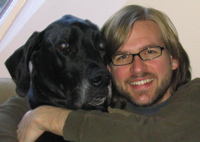Cam and hammer design has been the topic of much discussion lately. Lars and I both realized that, if we were to simply add extra pins to the cylinder on the original model in order to play all the notes in the tune, several of the pins would end up too close together such that a swinging hammer would crash into an upcoming pin before striking the chime (despite the fact that our tune features no rapidly repeating notes).
A related problem we've begun to consider is that we will have no control over the speed of rotation of the camshaft. There is no way to be certain that someone won't come along and turn the crank much faster than we would prefer. (Computer geeks like me call this an input validation problem.) Even if we have designed the pins so that they don't get clobbered by the hammer when turned at what we think is a reasonable speed, they could still be damaged when someone turns the crank too fast.
 Yet another related problem is the speed at which the hammers swing. Since each one is essentially a simple pendulum, increasing the scale from model size means that the period also increases. It wouldn't do to have a hammer take longer to swing to and from a chime than the duration between two repeated notes, and that duration is completely dependent on the whim of the crank turner!
Yet another related problem is the speed at which the hammers swing. Since each one is essentially a simple pendulum, increasing the scale from model size means that the period also increases. It wouldn't do to have a hammer take longer to swing to and from a chime than the duration between two repeated notes, and that duration is completely dependent on the whim of the crank turner!
A solution we are likely to try is to use multiple hammers (probably two) for each chime. With only one hammer per chime, we will have repeated notes as little as 0.75 seconds apart, but two alternating hammers would increase the minimum repetition to 1.75 seconds (2.75 if we add a third hammer to the most frequently used chime).
Another solution might be to create some kind of mechanism to prevent the crank from being turned too fast or to prevent the hammers from swinging when it is turned too fast. Lars writes, "Once it gets colder, I might start building machine parts and putting things together at random!"







No comments:
Post a Comment